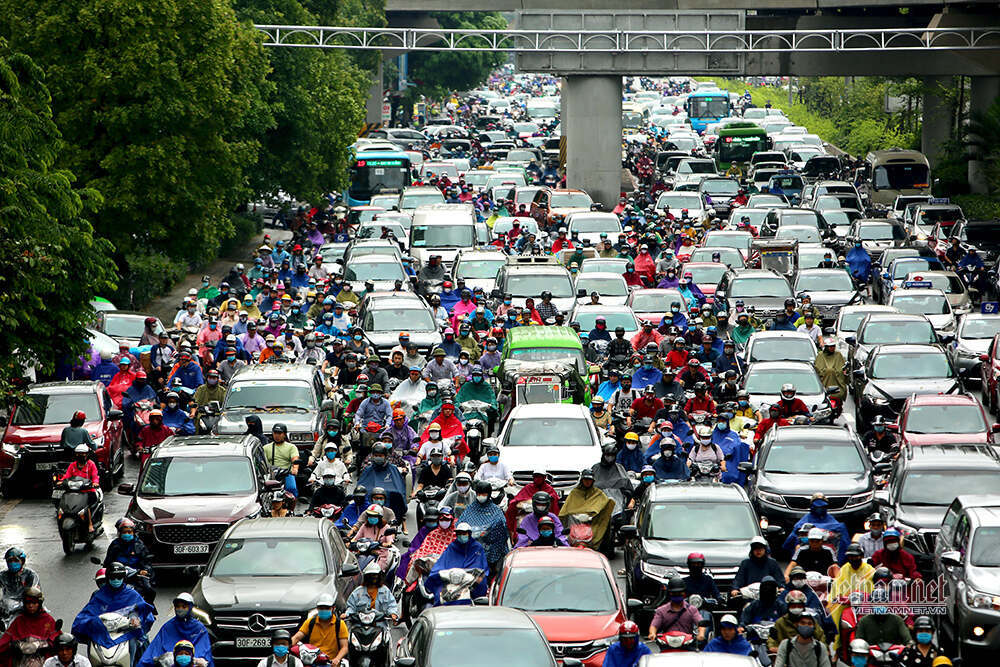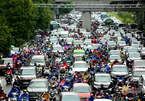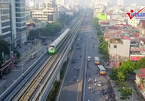
Hanoi is considering stopping motorbikes in inner districts, from Belt Road No 3, Truong Sa and Hoang Sa Roads and Highway No5 towards the central area of the city, starting from 2025.
The information is a surprise to Hanoians. Prior to that, the municipal authorities intended to prohibit motorbikes from 2030.
Restricting private vehicles and encouraging people to use public transport (bus, tramcar, urban railway) for travel in the inner city, helps ease traffic congestion and pollution.
In reply he long term, Hanoi has had to restrict private vehicles (motorbikes and cars) entering the inner city. However, Hanoi seems to be too hurried in shortening the motorbike ban roadmap.
Currently, Hanoians take 14 million trips every day, while public transport can satisfy 10 percent of demand. Tthe motorbike ban, if imposed, create difficulties for travel and earning a living.
Buses can carry large amounts of passengers, but with the limited speed (17-25 kilometers per hour), it can’t prove its efficiency. Buses can reach every street and corner, but the limitation in speed cannot encourage people to give private vehicles to take bus.
An urban railway is believed to be an important means of transport which can change people’s travel habit. However, Hanoi now has only one railway route – the Ca Linh –Ha Dong which has been put into operation since November. The second route, Nhon-Hanoi Station, is hoped to be ready by 2025.
Even with the two urban railway routes and the bus network which can run at ideal speed, it be difficult for Hanoi to prove that there are enough conditions to prohibit motorbikes by 2025.
In such conditions, many people will have to shift to use private cars if public transport is insufficient.
With car prices from VND300-400 million, owning a car is within the reach of many people.
| An urban railway is believed to be an important means of transport which can change people’s travel habit. However, Hanoi now has only one railway route – the Ca Linh –Ha Dong which has been put into operation since November. The second route, Nhon-Hanoi Station, is hoped to be ready by 2025. |
Meanwhile, one car occupies a road area 5-6 times higher than one motorbike, and the emissions of one car are 2-3 times higher.
Hanoi plans to collect tolls from private cars entering the inner city from 2030 to ease traffic jams.
Restricting motorbikes
To impose a motorbike ban and collect tolls from cars entering inner city, Hanoi authorities need to prove that public transport can satisfy people’s travel demand. If they can, people will voluntarily give up motorbikes and use public transport.
Soon after the Cat Linh – Ha Dong railway route became operational, many people along the route decided to abandon private vehicles to travel by the railway. This shows that people are willing to travel on public transport if they find it convenient and less costly.
To prepare for the private vehicle ban, the municipal authorities need to settle existing problems in transport infrastructure, and create favorable conditions for public transport to develop.
As for urban railways, in addition to effectively using exiting routes, the city needs to speed up the construction of other routes. It’s expected that eight more urban railways will be built to connect routes.
The implementation of the projects will require strong determination of the city, so that the lesson of the Nhon-Hanoi Station and Cat Linh – Ha Dong railways won’t be repeated (it took 8-10 years to complete the projects).
While waiting for more urban railways to be built, Hanoi’s traffic in the next 5-10 years would still depend on buses.
In rush hours, buses cannot bring into full play their capacity of carrying large amounts of passengers as they are surrounded by private vehicles. If the situation cannot improve, the more buses there are, the more serious the traffic jams and pollution will be.
In order to use buses in the most effective way, the city needs to reserve a transitway for buses on large roads with 6-8 lanes. When buses can promote their capability, they will attract people.
Not only reserving transitway for buses, Hanoi also needs to reserve pedestrian-only ways to help people access buses and urban railways. The convenience of buses from their homes to stations is also an important factor.
With the current transport infrastructure in Hanoi, it would be risky to rely on buses when prohibiting motorbikes. Analysts believe that even when buses can be exploited in the most effective way and the two urban railways are put into operation, this would still not be enough to completely replace motorbikes.
Only when public transport can satisfy 60-70 percent of the travel demand in inner city will Hanoi think of restricting private vehicles.
Together with developing public transport, Hanoi also needs to speed up the construction of the key roads connecting both inner and suburban areas, such as elevated Belt Road No 2, Road No 70 and Belt Road No 4, to help ease the traffic load in the inner city.
Gia Van

It’s too early to prohibit motorbikes in Hanoi in 2025: experts
A number of experts are against Hanoi’s plan to prohibit motorbikes beginning in 2025, warning that proper conditions will not be ready to implement the plan.

Hanoi considers prohibiting motorbikes in inner city districts
Motorbikes in the future may be stopped from entering Hanoi inner city districts at Belt Road 3, Truong Sa and Hoang Sa Roads and Highway No 5.